TEJO: The Game of Horseshoes ... Colombian Style!
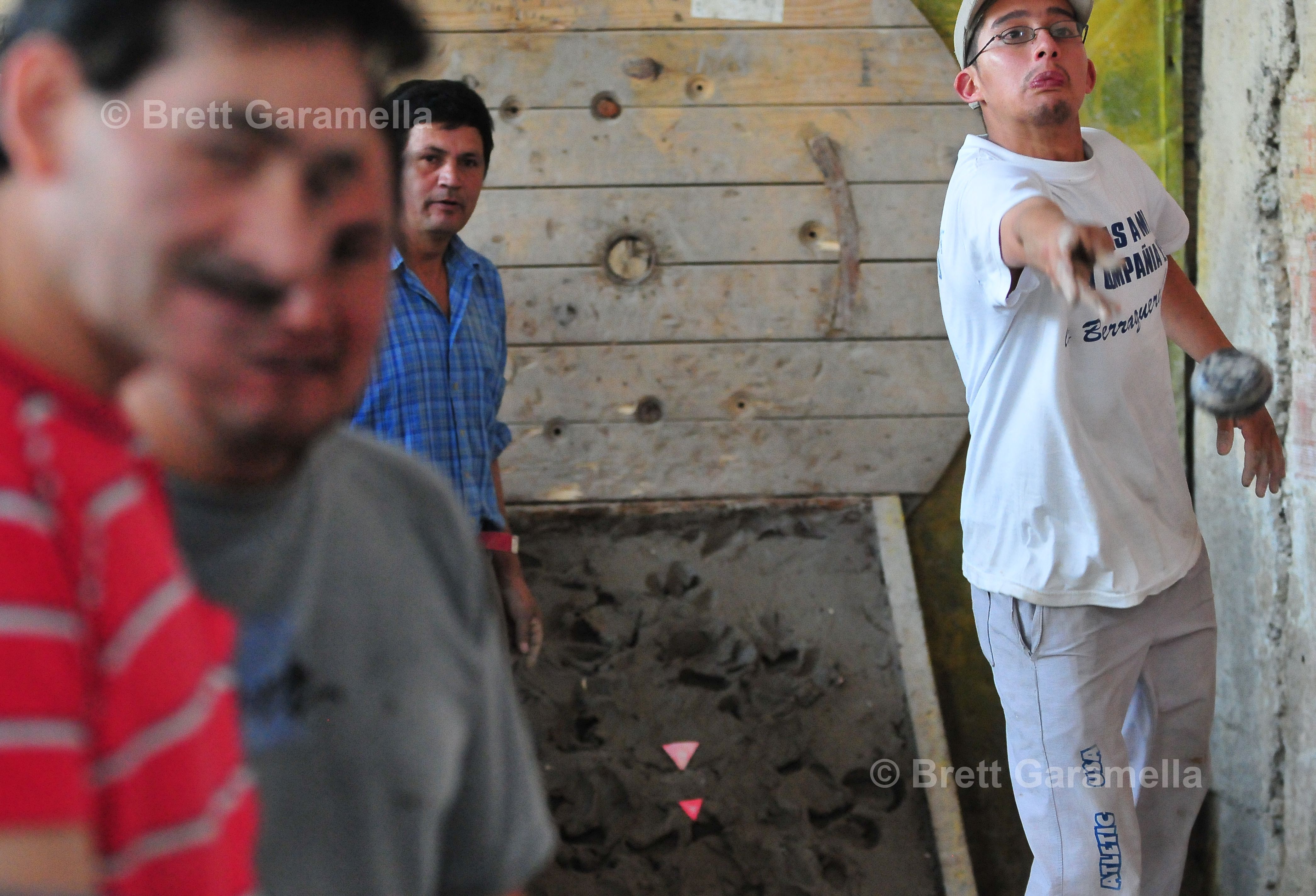
It wasn’t my typical Mother’s Day. I was surrounded by men who were drinking and smoking while loud gunpowder explosions popped my eardrums. Oddly enough, I had come here by choice.
I had come to see a neighborhood Tejo Championship.
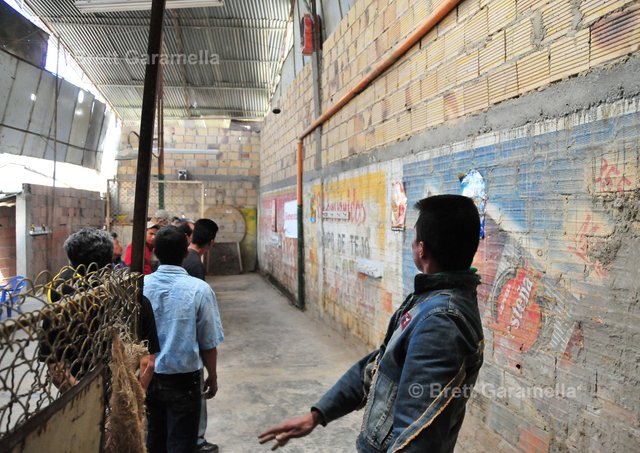
Tejo is a popular sport throughout Colombia. Like horseshoes, billiards, or bowling in America, it is a sport that is played by men, women, and children. However, it is more popular than horseshoes, billiards, or bowling is in the U.S. It is played on weekends, and especially on Sunday. It is most popular among men whose age keeps them off the soccer fields. If I had to compare it to another sport, I might say bocce, but that would be a stretch.
So let me tell you about my experience and hopefully that will make it clearer. I was in a neighborhood called Gibraltar, which is located on the top of a steep, round hill that isn’t far from Portal Tunal (in the southwest of Bogotá). Like all the others around it, the tejo building was made of red bricks with a corrugated tin roof, only its roof was very high. Fittingly, there was “Costeña” painted in big letters on the building’s exterior. Costeña is a popular Colombian beer. So how did I find this building if it looked like all the others? I had befriended a family who lived nearby. The father of this family was playing in this tournament. The players were just arriving around 10 a.m.
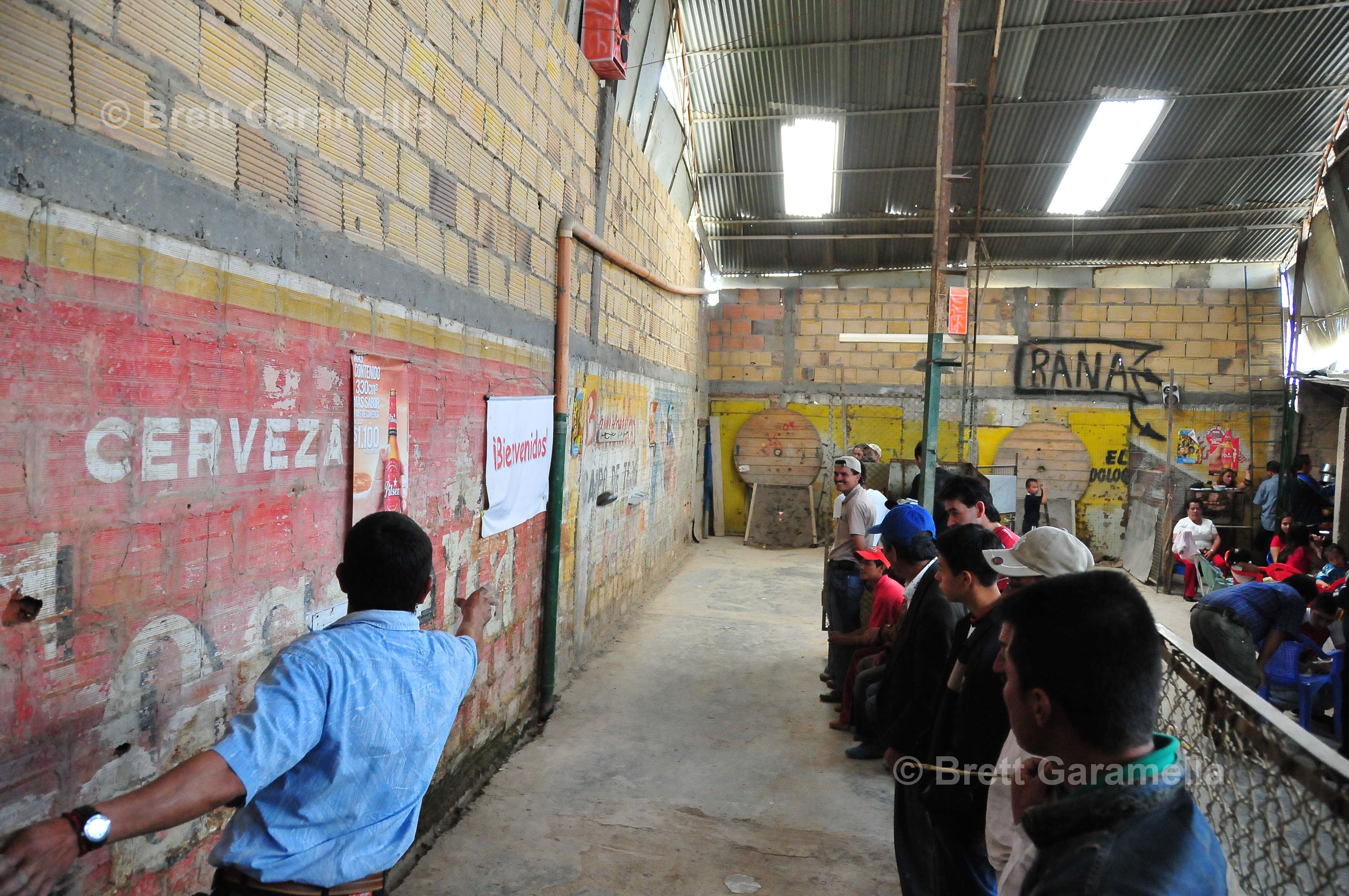
In the meantime, I played rana with the father’s family in a small room next to the tejo room. Rana, or “frog,” is also a popular Colombian game, where two players stand about 10 to 15 feet away from a wooden stand, which has a few metal frogs on top with various round holes around them. Each hole has a different compartment and score. The metal rings are slightly smaller than the holes. The object is to get 200 points by tossing the metal rings inside the holes or frogs’ mouths. Throwing it inside one of the frog’s mouth was worth 100 points, but was as difficult as throwing a bull’s-eye in darts.
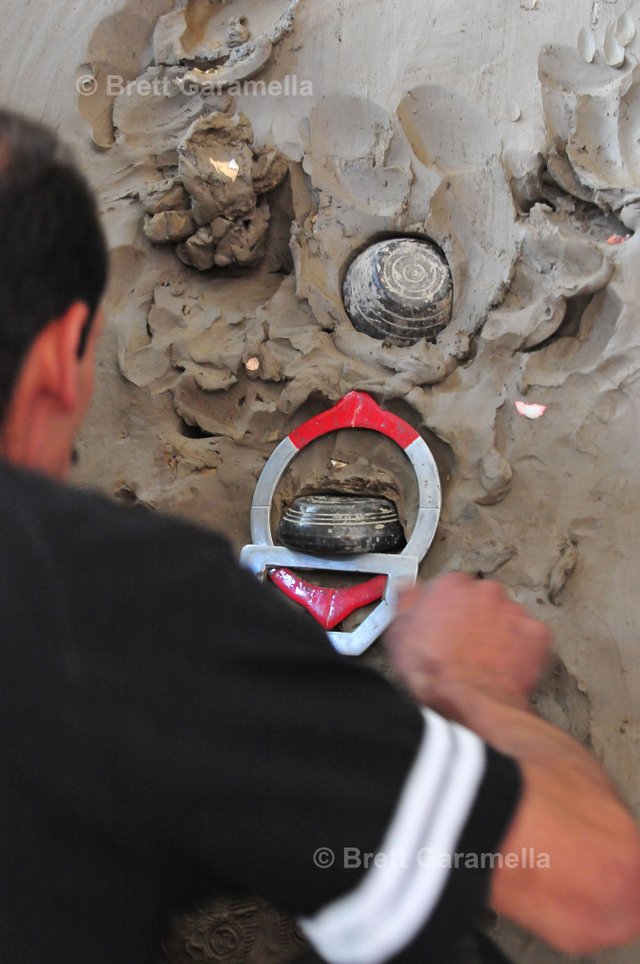
I didn’t get to finish my game because the first tejo game was beginning in the other room. There were two official-sized courts, and a smaller one inbetween for children. The official court is about 60 feet long. At each end is a stand filled with hard clay. In the center is a metal ring. Two pink, triangle-shaped packets of gunpowder are placed on the top and bottom of the ring. (For non-championship games, they use four gunpowder packets.) Each team has three players. Each player has one tejo, or metal disc that weighs about five pounds. Standing at one end of the court, each player has his turn to throw his tejo toward the ring at the other end. There is a yellow line that players can’t cross while tossing their tejo. Players must toss it underhand. One point is given to a team when the tejo hits a gunpowder packet and makes it explode. If it doesn’t explode, no point is given. If the tejo lands inside the metal ring, the referee uses a measuring device. If the tejo can fit through this device, two points are given. To get this two points, the tejo has to hit the clay with its thin-side exposed, not easy to do from almost 60 feet away. The first team to 27 points wins. It was a single-elimination tournament with seven teams of men. There are tournaments for women, too.
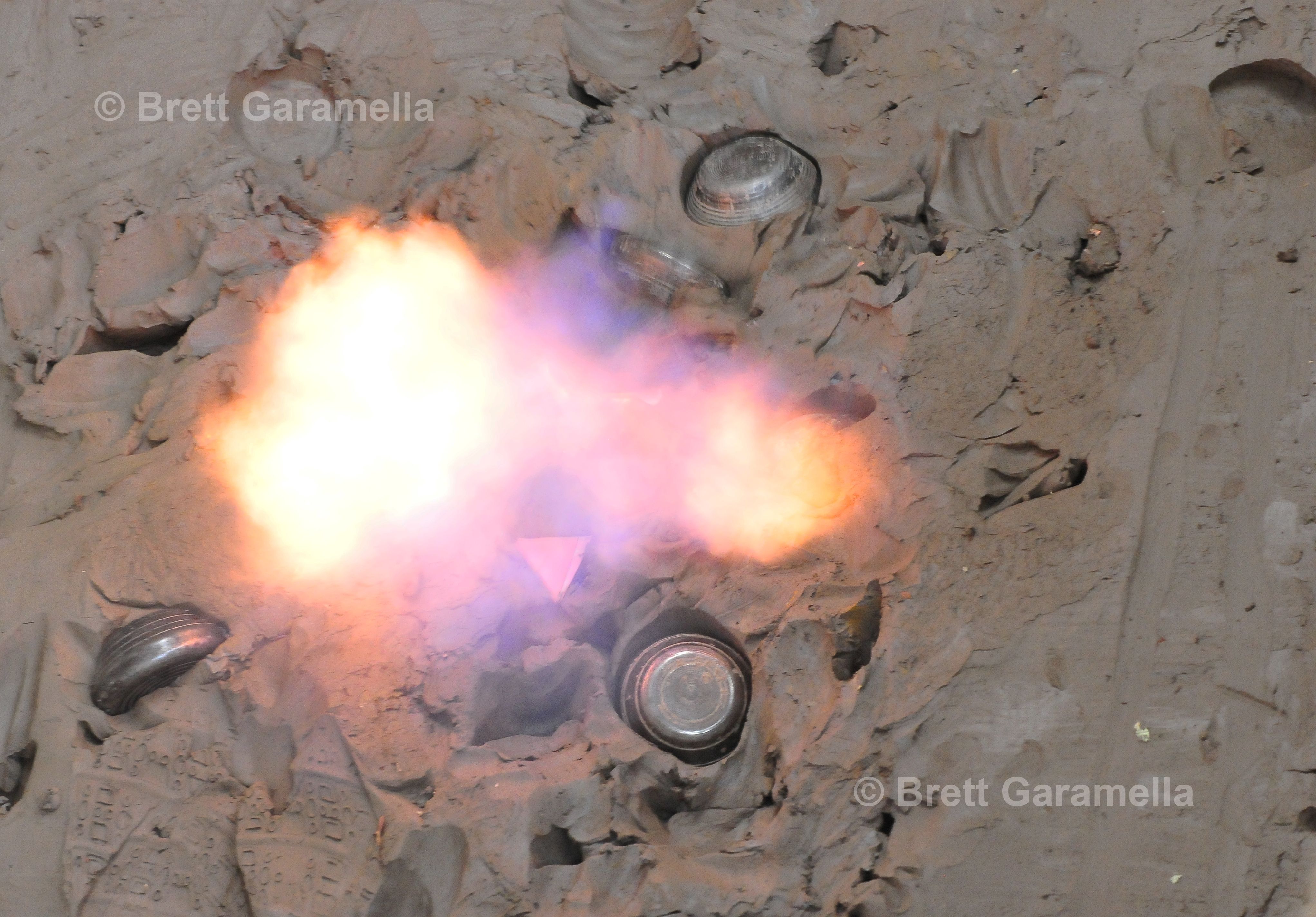
Though, on this day the women sat and watched as a few of them nursed their babies. The players and children stood and sat on a long wooden bench between the two courts. The championship court was blocked off with a rope, though they let me duck under it to take some photos. There were also a small bar and a woman grilling sausage, pig, and potatoes. It was a friendly and relaxed atmosphere. After all, there were no prizes given. The players were mostly poor men who work manual labor jobs. They play together every weekend and drink beer together afterward. It was a good place for male bonding. Most of the wives left after a couple hours. The men hung around until dinner time.
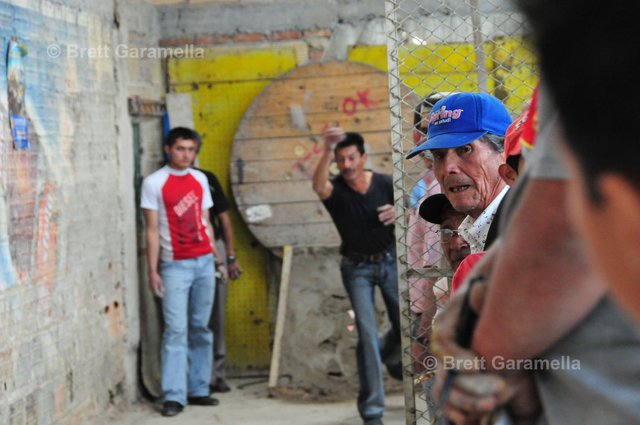
Two things amazed me about tejo: the heaviness of the tejo; and the ability of the players to consistently toss it with such consistent accuracy. I guess this is what happens when you play all weekend, every weekend. I could be wrong, but I think this sport is more popular in poorer neighborhoods because it is a cheap form of entertainment. The people who live in the area I visited don’t have computers or internet. Some have televisions, but only get a few channels. After working six days of manual labor a week, who wants to run around and play soccer? This is why tejo is so popular. It’s a place where a working man can go and play a sport and drink some beer with his buddies.
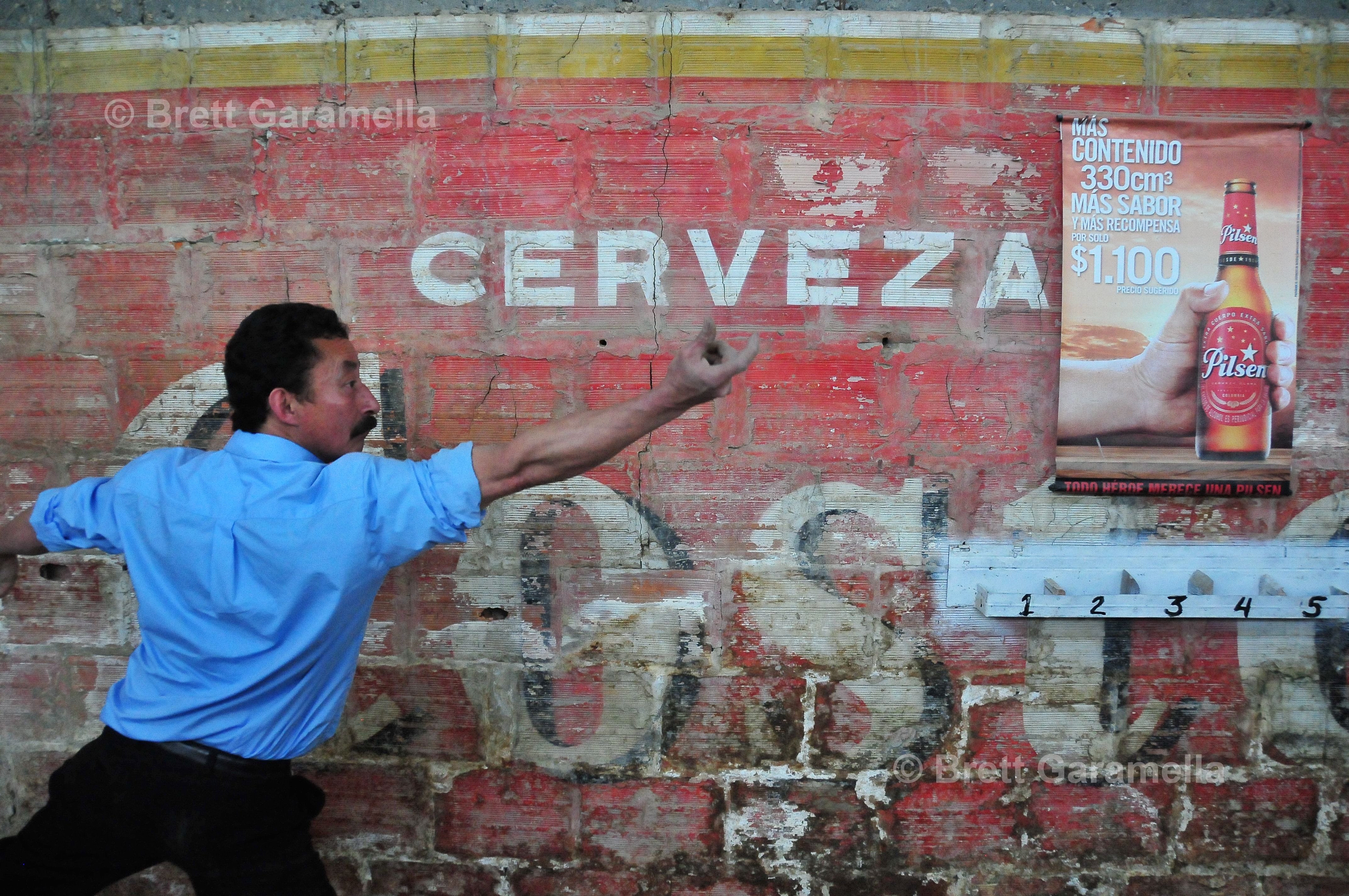
That sounds like a fun sunday!
Yeah, it was a fun time and good cultural experience. That's why I like to go off the beaten path when I travel.
Congratulations @brettgaramella! You have completed some achievement on Steemit and have been rewarded with new badge(s) :
Click on any badge to view your own Board of Honnor on SteemitBoard.
For more information about SteemitBoard, click here
If you no longer want to receive notifications, reply to this comment with the word
STOPBy upvoting this notification, you can help all Steemit users. Learn how here!